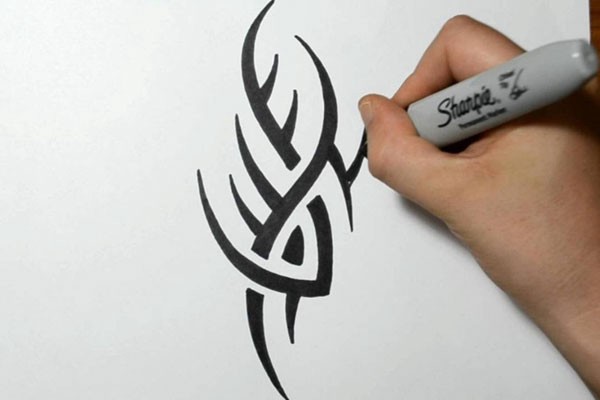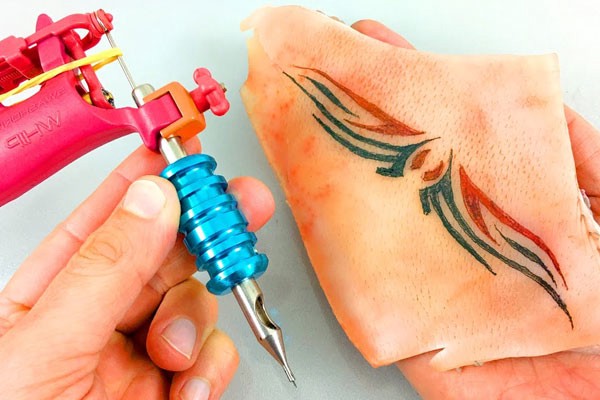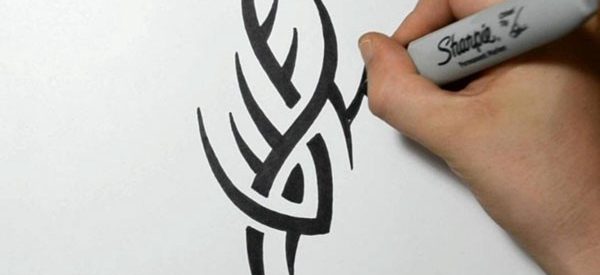A career as a tattooist is full of exciting challenges. Twitching clients, equipment that tires out the hand, and the need to replicate various styles of art all obstacles only a trained and dedicated tattooist can consistently overcome. But even if you have an apprenticeship, it can be a year or longer before you?re allowed to tattoo a person. With the use of a few techniques and dedication on your part, you?ll be well prepared to start tattooing when you finally do.
1. Tattoo Academy & Coaching Training Your Drawing Skills for Tattooing
1. Draw constantly
As a professional tattoo artist, you?ll be expected to sketch out, sometimes start to finish, the designs your clients want. This will require you to be skillful at reproducing many different kinds of styles, which can only really be mastered through experience and repetition.

2. Draw on contoured objects
Apples, oranges, and other contoured items, like rocks, can simulate some of the difficulties you?ll have tattooing various parts of the body. Seek out items that somewhat resemble body parts commonly tattooed, so that you?re well prepared when someone requests a tattoo on a more curvaceous part of the body.
3. Test your tattooist skills with a non-toxic marker and a friend
Though the experience of drawing on a person?s body is markedly different from operating a tattoo machine and depositing ink into the skin, this practice will get you accustomed to drawing on a living canvas. You might even seek out your more ticklish friends so that you have experience with a squirming client.
Related Post: Process of Tattooing
4. Train yourself in inking lines and tracing
Many professional tattooists first learn form Tattoo Academy & Coaching began learning the art by tracing sample tattoos and simplifying designs to be more translatable to the skin. This skill can be imitated and studied academically by enrolling in a class in Inking, which is the practice of outlining and interpreting an original pencil drawing.
2. Becoming Familiar with the Equipment
1. Use a weighted pencil or pen to simulate the tattooing machine
Some tattooists recommend building hand strength by simulating the weight of the tattoo machine applicator. This machine uses an applicator heavier than a pen or pencil to drive ink into the sub-layers of the skin, leaving behind permanent skin art. You may want to start your weighted practice by attaching about 80 grams 3 ounces to a drawing utensil.

2. Purchase a cheap tattoo machine for practice
This will provide you with a way to become comfortable with the machine. Beyond understanding how its working parts operate, how to replace failed parts, and how to assess the working condition of a tattoo machine, you?ll also have to become comfortable with holding the applicator for long periods of time. You might also rig a pencil to your tattoo machine and practice drawing. This way you?ll develop comfort and familiarity with machine and clip cord. While a cheap machine is great for personal practice, you may not want to use your practice machine on clients.
3. Learn about the different kinds of tattoo machines
There are many different tattoo machines on the market, though coil tattoo machines are the most commonly used variety. Certain machines are used to accomplish certain effects, like shading and coloring. Altogether, you should be familiar with.
- Coil tattoo machines
- Rotary tattoo machines
- Pneumatic tattoo machines
- Shader tattoo machines
- Liner tattoo machines
Related Post: How to Choose a Tattoo Design
4. Learn to compensate for the vibration of your tattoo machine
The force of your machine operating will cause an intense vibration that you may feel through your entire arm. Be prepared for this when you turn on your machine, dip your nip in ink, and train your hand to be steady
3. Practicing with a Tattoo Machine
1. Practice on fruit
Fruits have a challenging contour that will mimic the clients that sit in your chair for a tattoo, and are cheaper and more readily available than other options. Some fruits that you should consider for tattooing practice
- Bananas
- Melons
- Grapefruits
2. Consider synthetic skin
Synthetic skin is a relative newcomer in Clinical Tattoo Parlour to the tattooing scene. Practice skin is relatively easy to order from online sources, but many tattooists criticize this false skin as too far from the real thing. Synthetic skin can: Be useful for starting out and getting a feel for your tattoo machine. Provide you with practice for building your hand strength.
3. Tattoo to the correct depth
Human skin is comprised of three layers, with some of these layers have sub-layers. The top layer of your skin, the epidermis, is made up of a total of five layers which grow outward, which means ink deposited in the epidermis will eventually fade. Your target depth when tattooing should be the middle layer, the dermis, which is between one and two millimeters beneath the skin. Going too deep into the skin with your tattoo machine can lead to unnecessary pain for your client and a possible risk of infection.
Source ? Wikihow


